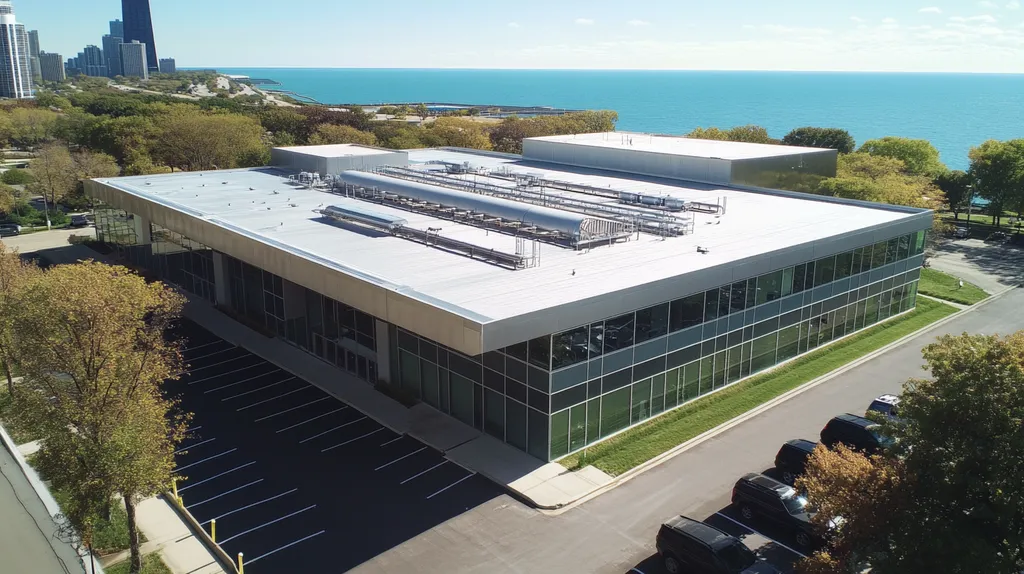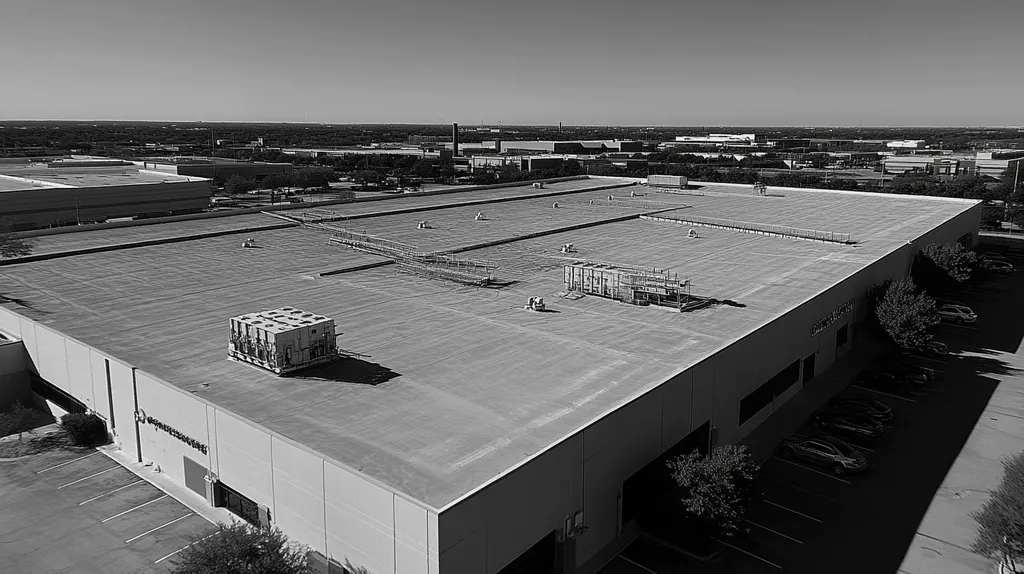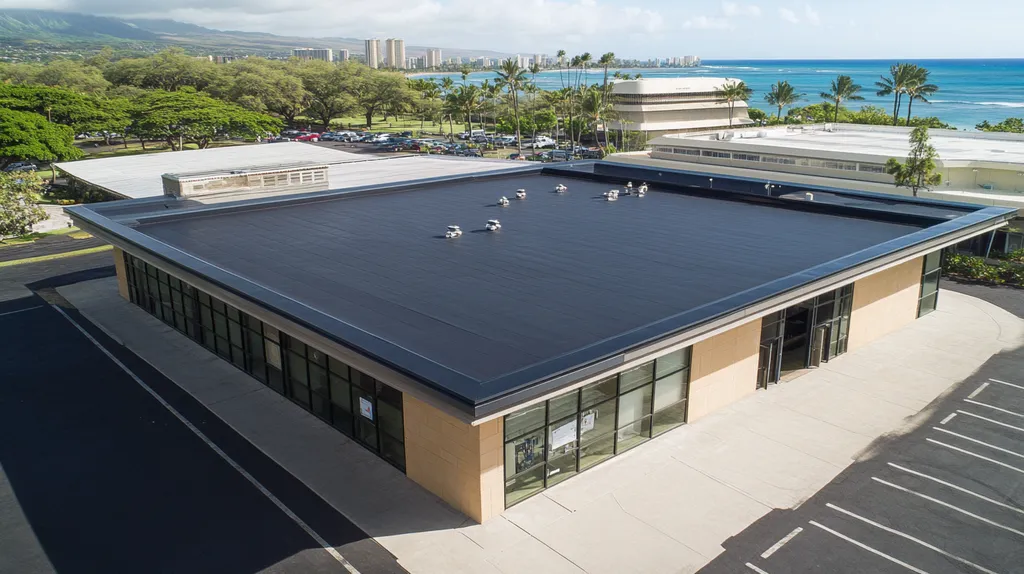Welcome to today’s Battle Royale featuring two roofing heavyweights: “Cool Roof Systems” in the east corner versus “Green Roof Systems” in the west!
Tonight’s showdown pits these contenders against each other across six punishing rounds designed to test every aspect of their performance for Eco-Friendly Options for Commercial Roof Systems.
At stake? Millions in potential costs, decades of building protection, and the critical performance demands of modern commercial and industrial facilities.
Our professional judging panel will evaluate each round on technical merit, real-world performance, and value delivery. After all six rounds, we’ll declare our ultimate champion.
Ladies and gentlemen, facility managers and building owners… it’s time to rumble!
ROUND 1: INITIAL COSTS & INSTALLATION
In today’s commercial roofing landscape, the wrong system choice can lead to hundreds of thousands in unexpected costs. With roofing projects often representing 5-10% of total building costs, the stakes are particularly high for property owners weighing eco-friendly options. Understanding the true cost implications of Cool Roof Systems versus Green Roof Systems requires careful examination of three critical factors.
Material Expenses
Cool Roof Systems utilize specialized reflective coatings or single-ply membranes that typically cost $10-15 per square foot for materials. These materials often carry 15-20 year warranties and require minimal additional structural support.
Green Roof Systems demand more substantial investments, ranging from $25-40 per square foot for extensive (lightweight) systems to $40-100 per square foot for intensive (deep soil) configurations. These costs include waterproofing membranes, root barriers, drainage layers, growing medium, and vegetation.
While both systems offer unique benefits, the stark difference in material costs makes Cool Roof Systems more financially accessible for most commercial properties.
ADVANTAGE: Cool Roof Systems
Installation Complexity
Cool Roof installation follows familiar commercial roofing procedures, requiring standard roofing crews and conventional equipment. Most installations can be completed using existing workforce skills with minimal specialized training.
Green Roof installation demands multiple specialized trades, including structural engineers, waterproofing experts, and landscape professionals. The process requires careful coordination between these teams and often necessitates additional structural reinforcement.
The straightforward nature of Cool Roof installation translates to lower labor costs and reduced risk of installation errors.
ADVANTAGE: Cool Roof Systems
Project Timeline
Cool Roof installations typically complete within 5-10 working days for an average commercial building. This rapid deployment minimizes business disruption and reduces exposure to weather-related installation risks.
Green Roof projects often extend 3-4 weeks for basic extensive systems and can stretch to 8-12 weeks for intensive configurations. This longer timeline increases vulnerability to weather delays and extends the period of business disruption.
The significant difference in completion times makes Cool Roof Systems more attractive for properties requiring quick deployment.
ADVANTAGE: Cool Roof Systems
ROUND 1 WINNER: Cool Roof Systems
ROUND 2: DURABILITY & LIFESPAN
When evaluating commercial roofing systems, durability and lifespan directly impact the total cost of ownership. A roofing failure can lead to extensive damage, costing businesses an average of $250,000 in repairs and lost productivity. Understanding how different eco-friendly options perform over time is crucial for making informed investment decisions.
Weather Resistance
Cool roof systems excel in managing thermal stress through their reflective properties. Their specialized coatings and membranes reduce surface temperatures by up to 50°F compared to traditional roofs, minimizing expansion and contraction damage.
However, these systems can be vulnerable to moisture accumulation in humid climates. The reflective surface may also degrade over time, particularly in areas with high UV exposure or frequent precipitation.
Green roof systems provide natural protection against weather extremes. The vegetation and soil layers shield the underlying waterproofing membrane from UV radiation and temperature fluctuations, significantly extending its lifespan.
ADVANTAGE: Green Roof Systems
Structural Integrity
Cool roof systems typically maintain their structural integrity with minimal intervention. Their lightweight design puts less stress on building structures, reducing the risk of structural fatigue over time.
Green roof systems offer superior protection for the roofing membrane and can last twice as long as conventional roofs. The vegetative layer acts as a natural shield against physical damage and environmental wear. (source: RoofCrafters)
However, green roofs require careful monitoring of root systems and drainage to prevent membrane penetration or water damage. The additional weight also demands ongoing structural assessment.
ADVANTAGE: Cool Roof Systems
Maintenance Requirements
Cool roof systems need periodic cleaning and recoating to maintain their reflective properties. Most systems require inspection twice yearly and recoating every 5-10 years to maintain optimal performance.
Green roof systems demand more intensive maintenance, including regular irrigation, weeding, and plant replacement. The complexity of living systems requires specialized knowledge and consistent attention to maintain proper function.
While both systems require regular maintenance, cool roofs offer more straightforward and less frequent maintenance needs.
ADVANTAGE: Cool Roof Systems
ROUND 2 WINNER: COOL ROOF SYSTEMS
ROUND 3: PERFORMANCE FACTORS
In today’s climate-conscious market, roofing performance can make or break a commercial property’s operational budget. With energy costs rising 15-25% annually in many regions, the right roofing system choice directly impacts both monthly expenses and long-term property value. Understanding performance differences between Cool Roof and Green Roof systems has never been more critical for facility managers.
Energy Efficiency
Cool Roof Systems deliver immediate and measurable energy savings through their high solar reflectance. These systems can reduce peak cooling demands by 15-25% in single-story buildings.
The reflective surfaces maintain their performance with basic maintenance, though efficiency may decrease 10-15% over time without regular cleaning. Even with some degradation, these systems consistently outperform traditional roofing in cooling load reduction.
Green Roof Systems provide insulation through multiple layers of growing medium and vegetation. While effective, their energy performance varies significantly based on plant health and moisture content.
The variable nature of living systems makes energy savings less predictable and harder to maintain consistently over time.
ADVANTAGE: Cool Roof Systems
Temperature Management
Cool Roof Systems excel at reducing urban heat island effects by reflecting up to 80% of incoming solar radiation. Surface temperatures typically stay within 20°F of ambient air temperature, even during peak summer conditions.
These systems struggle more in colder climates, where their reflective properties can increase winter heating costs by rejecting beneficial solar heat gain.
Green Roof Systems naturally moderate temperature through evapotranspiration and thermal mass. They provide year-round benefits, reducing both summer cooling and winter heating demands.
The adaptive nature of living systems makes Green Roofs more effective at managing temperature extremes across all seasons.
ADVANTAGE: Green Roof Systems
Stormwater Management
Cool Roof Systems offer minimal stormwater management benefits beyond standard drainage systems. Their smooth surfaces typically channel water directly to gutters and drains.
These systems require traditional stormwater infrastructure and provide no natural filtration or retention capabilities.
Green Roof Systems excel at managing stormwater, retaining 50-90% of rainfall depending on soil depth and vegetation type. They reduce peak water flow rates and filter pollutants naturally.
The superior water management capabilities of Green Roof Systems provide clear advantages for properties in areas with strict stormwater regulations or aging infrastructure.
ADVANTAGE: Green Roof Systems
ROUND 3 WINNER: TIE
ROUND 4: MAINTENANCE REQUIREMENTS
In today’s commercial roofing landscape, maintenance decisions directly impact both environmental performance and long-term costs. Property owners face a critical challenge: commercial roofs represent up to 60% of facility maintenance expenses when improperly maintained. The stakes are particularly high as we enter 2025, where roofing choices have profound implications for environmental sustainability. (source: Origin Exteriors)
Regular Inspection Requirements
Cool roof systems demand bi-annual professional inspections to maintain their reflective properties and structural integrity. These inspections typically focus on surface degradation, seam integrity, and drainage system functionality.
Most cool roof issues can be identified through visual inspection and basic testing procedures. Early detection of coating wear or adhesion problems prevents more serious damage from developing.
Green roof systems require monthly inspections during growing seasons to monitor plant health, soil conditions, and drainage performance. These inspections must be conducted by specialists trained in both roofing and horticultural maintenance.
The complexity and frequency of green roof inspections create higher ongoing monitoring costs compared to cool roof alternatives.
ADVANTAGE: Cool Roof Systems
Preventive Maintenance Tasks
Cool roof maintenance primarily involves surface cleaning and periodic recoating. Most systems need professional cleaning every 12-18 months to maintain optimal reflectivity.
Recoating intervals typically range from 5-10 years, depending on local climate conditions and exposure levels. These tasks can usually be completed within 1-2 working days.
Green roof systems require continuous attention to vegetation management, including watering, fertilizing, and weed control. Soil depth must be monitored and maintained, while drainage layers need regular clearing.
The living components of green roofs demand year-round maintenance attention, creating more complex and time-intensive care requirements.
ADVANTAGE: Cool Roof Systems
Emergency Response Protocols
Cool roof systems allow quick identification and repair of damage due to their simple, single-layer construction. Most emergency repairs can be completed within 24-48 hours using standard roofing materials.
Weather-related damage to cool roofs typically affects only the coating layer, making repairs straightforward and cost-effective.
Green roof emergencies often involve multiple system layers and require coordination between roofing and landscaping specialists. Water intrusion can be particularly challenging to trace and repair due to the complex layering.
The additional complexity of green roof systems extends both diagnostic and repair timelines during emergencies.
ADVANTAGE: Cool Roof Systems
ROUND 4 WINNER: COOL ROOF SYSTEMS
ROUND 5: SUSTAINABILITY CREDENTIALS
Environmental impact has become a defining factor in commercial roofing decisions, with buildings contributing nearly 40% of global carbon emissions. The construction industry faces mounting pressure to reduce waste and environmental damage, particularly in roofing where material choices have lasting consequences.
With commercial roofing generating over 100,000 pounds of waste for mid-sized building replacements, selecting the right sustainable system has never been more critical. (source: Simon Roofing)
Carbon Footprint
Cool Roof Systems minimize carbon emissions through reduced energy consumption and manufacturing efficiency. Their lightweight materials require less energy to produce and transport than traditional roofing products.
These systems typically allow installation over existing roofs, significantly reducing landfill waste. Their extended lifespan and minimal maintenance requirements further reduce the overall carbon impact.
Green Roof Systems actively sequester carbon through vegetation while providing natural insulation. However, their intensive installation process and regular maintenance requirements generate ongoing carbon emissions.
ADVANTAGE: Cool Roof Systems
Ecosystem Impact
Cool Roof Systems provide minimal direct ecosystem benefits beyond reducing urban heat island effects. Their smooth surfaces offer no habitat value and can increase stormwater runoff velocity.
Green Roof Systems create thriving microhabitats that support local biodiversity. These living systems naturally filter air pollutants, support pollinators, and provide crucial green space in urban environments.
The profound ecological benefits of Green Roof Systems make them clearly superior for ecosystem enhancement.
ADVANTAGE: Green Roof Systems
Resource Conservation
Cool Roof Systems excel at energy conservation through solar reflection but offer limited benefits for other resource management. Their primary contribution focuses on reducing cooling loads and urban heat absorption.
Green Roof Systems provide comprehensive resource benefits, including natural stormwater management, improved air quality, and reduced noise pollution. They also extend roof membrane life by protecting it from UV damage and temperature fluctuations.
The multi-faceted resource conservation capabilities of Green Roof Systems deliver superior overall value.
ADVANTAGE: Green Roof Systems
ROUND 5 WINNER: GREEN ROOF SYSTEMS
ROUND 6: SPECIALIZED APPLICATIONS
As commercial real estate adapts to climate change, specialized roofing applications have become critical decision points for property owners. With 60% of urban surfaces being rooftops, choosing the right system for specific use cases directly impacts both building performance and environmental footprint.
Understanding how different eco-friendly options perform in specialized scenarios helps prevent costly mismatches between roofing systems and building requirements. This evaluation focuses on three key application areas where system selection significantly impacts long-term success.
High-Traffic Applications
Commercial roofs often serve as platforms for HVAC equipment, solar installations, and maintenance activities. These high-traffic scenarios demand systems that can withstand regular foot traffic and equipment placement without compromising performance.
Cool roof systems handle traffic well when properly reinforced. Their single-layer construction allows for easy incorporation of walkway paths and equipment pads, while their reflective properties remain effective even in high-use areas.
Green roof systems struggle with heavy traffic, requiring dedicated pathways and protection zones that interrupt vegetation coverage. Equipment placement becomes complex due to root barrier concerns and weight distribution requirements.
ADVANTAGE: Cool Roof Systems
Food Service Applications
Buildings housing restaurants or food processing facilities present unique challenges due to grease exposure and ventilation requirements. These environments demand roofing systems that resist chemical degradation while maintaining environmental benefits.
Cool roof systems excel in food service applications, as their smooth surfaces resist grease accumulation and simplify cleaning. Their chemical-resistant coatings maintain reflective properties even with regular exposure to cooking emissions.
Green roof systems face significant challenges in food service settings. Grease particles can damage vegetation and contaminate growing medium, while root systems may interfere with essential ventilation equipment.
ADVANTAGE: Cool Roof Systems
Healthcare Applications
Healthcare facilities require roofing systems that support strict infection control protocols while maintaining consistent indoor environmental quality. These applications must balance maintenance accessibility with environmental performance.
Cool roof systems provide excellent support for healthcare requirements through their easy-to-clean surfaces and minimal maintenance needs. They help maintain stable interior temperatures critical for patient care while allowing quick access for equipment maintenance.
Green roof systems, while offering therapeutic benefits through views of nature, introduce concerns about airborne spores and bacteria. Their complex maintenance requirements can also conflict with medical facility operations.
ADVANTAGE: Cool Roof Systems
ROUND 6 WINNER: COOL ROOF SYSTEMS
AND THE WINNER IS…
After six grueling rounds of technical evaluation, we have our verdict, ladies and gentlemen! With four decisive round victories, COOL ROOF SYSTEMS claims the championship belt in this eco-friendly showdown!
The champion dominated through superior cost-effectiveness, straightforward maintenance requirements, and versatility across specialized applications. Its knockout performance in initial costs, durability, maintenance, and specialized scenarios proved too much for the challenger to overcome.
But don’t count Green Roof Systems out completely! This worthy contender showed impressive strength in sustainability credentials and remains the undisputed champion for properties prioritizing biodiversity, stormwater management, and maximum ecosystem benefits.
Remember, fight fans: Every building enters the ring with unique requirements. Local climate conditions, structural capabilities, and specific property characteristics all influence which system ultimately delivers the winning combination for your facility. While this analysis provides heavyweight insights, property owners should always consult qualified roofing professionals who can evaluate their specific situation before choosing their corner.
In the high-stakes arena of commercial roofing, true victory comes not from blindly backing the champion, but from strategically matching your building’s specific needs with the right contender’s strengths. Now get out there and make your roofing decision count!
FREQUENTLY ASKED QUESTIONS
Q. What are the costs for commercial roof installation options?
A. Cool Roof Systems typically range from $10-15 per square foot. In contrast, Green Roof Systems can cost between $25-100 per square foot, depending on the system’s complexity and installation requirements.
Q. How do durability and lifespan compare for industrial roofs?
A. Cool Roof Systems generally have a simpler maintenance regime and longer lifespan with less intervention. Green Roof Systems can last longer overall, but their organizational complexity requires careful monitoring and maintenance for optimal performance.
Q. Which commercial roof system performs better for energy efficiency?
A. Cool Roof Systems provide immediate energy savings by reflecting solar radiation, while Green Roof Systems offer insulation but their performance can fluctuate based on various factors, such as plant health and moisture levels.
Q. What are the maintenance requirements for a commercial roof?
A. Cool Roof Systems require bi-annual inspections and periodic cleaning, whereas Green Roof Systems need monthly inspections and extensive maintenance tasks, making cool roofs easier to manage and less costly over time.
Q. What are the sustainability credentials of these roofing options?
A. Cool Roof Systems reduce carbon emissions by minimizing energy consumption and waste. Green Roof Systems enhance biodiversity and filter pollutants, but their installation generates ongoing emissions, affecting overall sustainability credentials.
Q. Which industrial roof option is better for specialized applications?
A. Cool Roof Systems are better suited for high-traffic, food service, and healthcare applications due to their durability and easier maintenance. Green Roof Systems, while beneficial for ecology, have complexities that may hinder performance in these specialized scenarios.
Q. How do Cool and Green Roof Systems contribute to stormwater management?
A. Cool Roof Systems offer limited stormwater management, largely relying on existing drainage systems. In contrast, Green Roof Systems can retain significant amounts of rainwater, effectively reducing runoff and providing natural filtration benefits.











